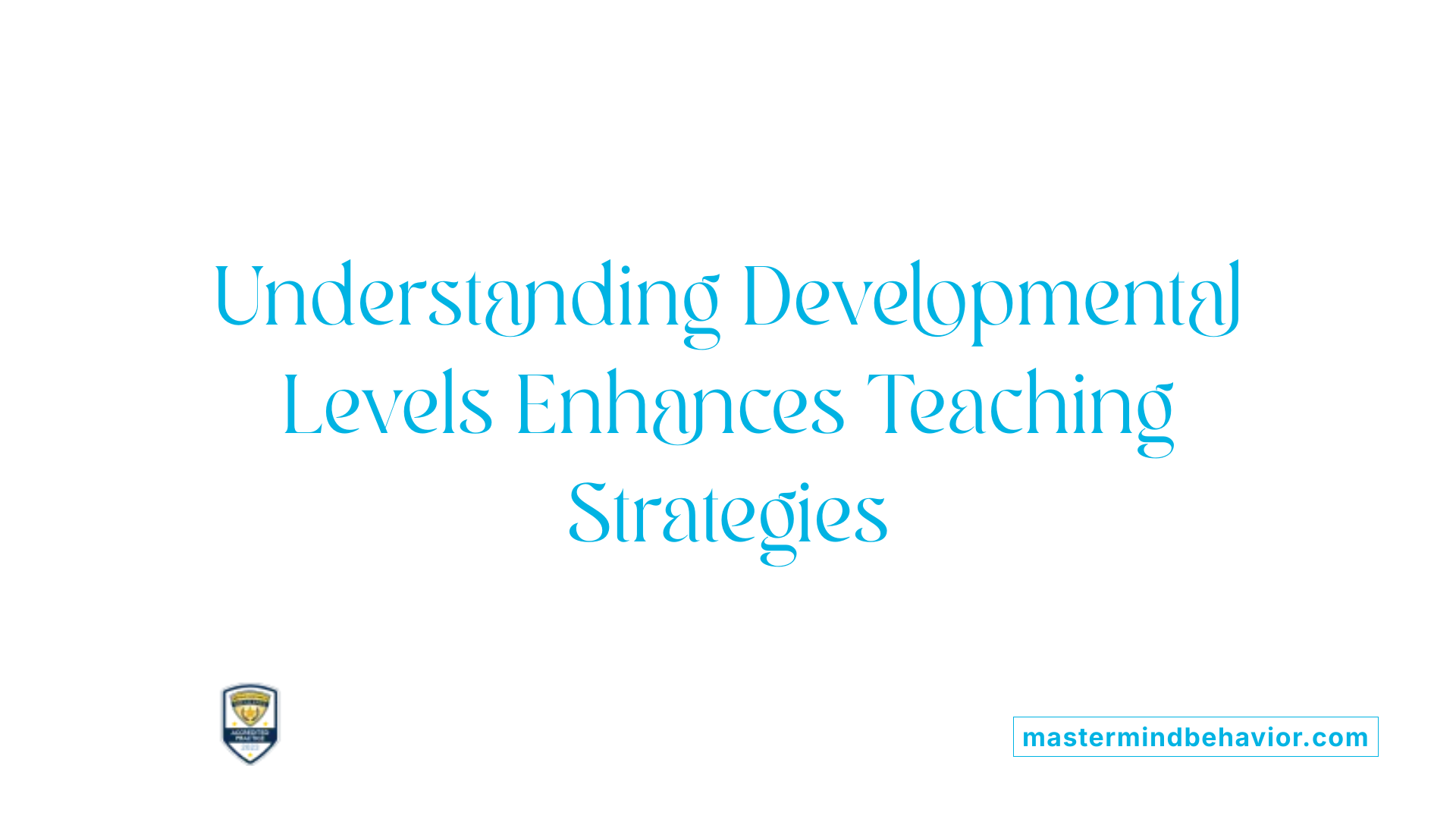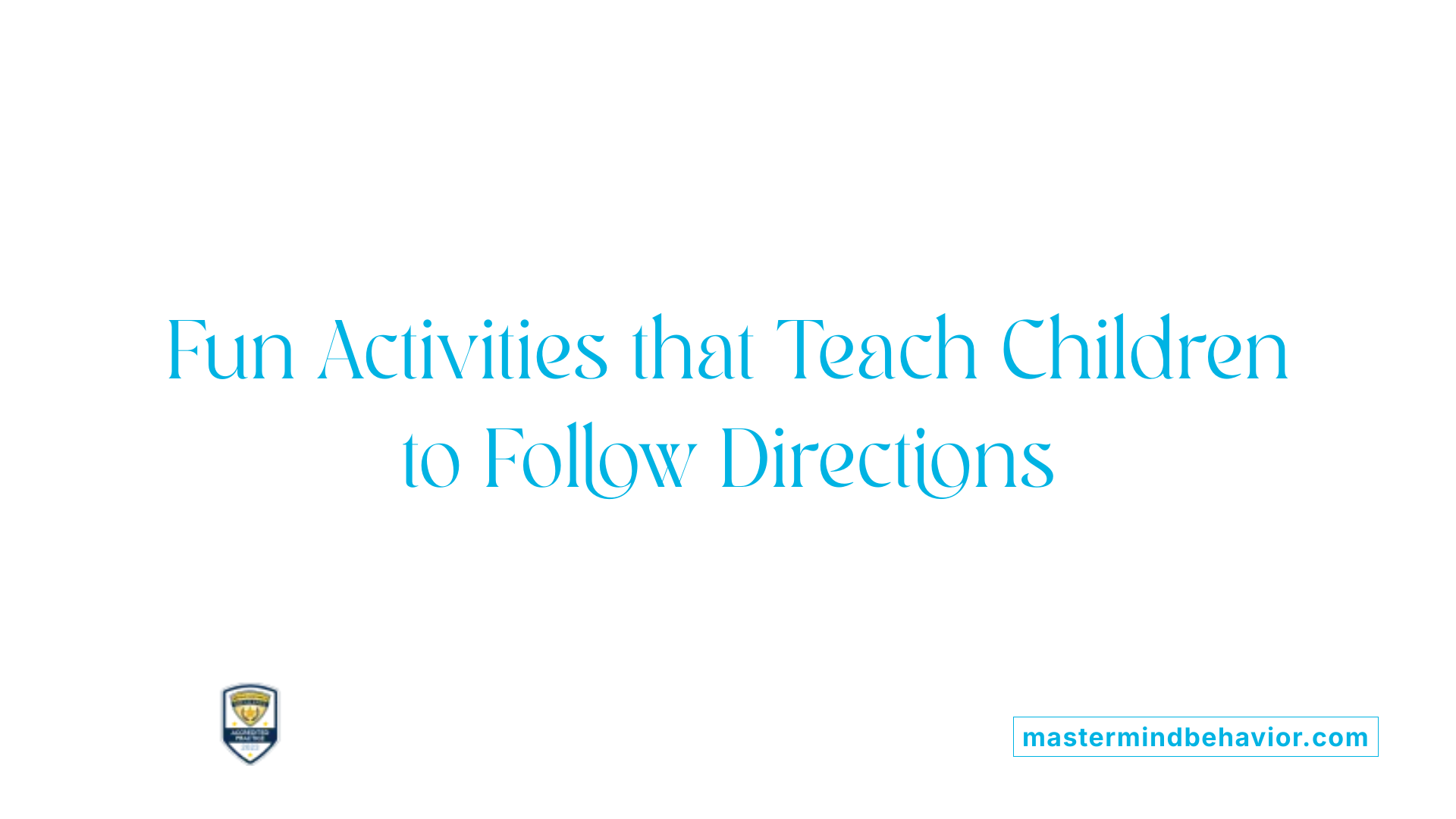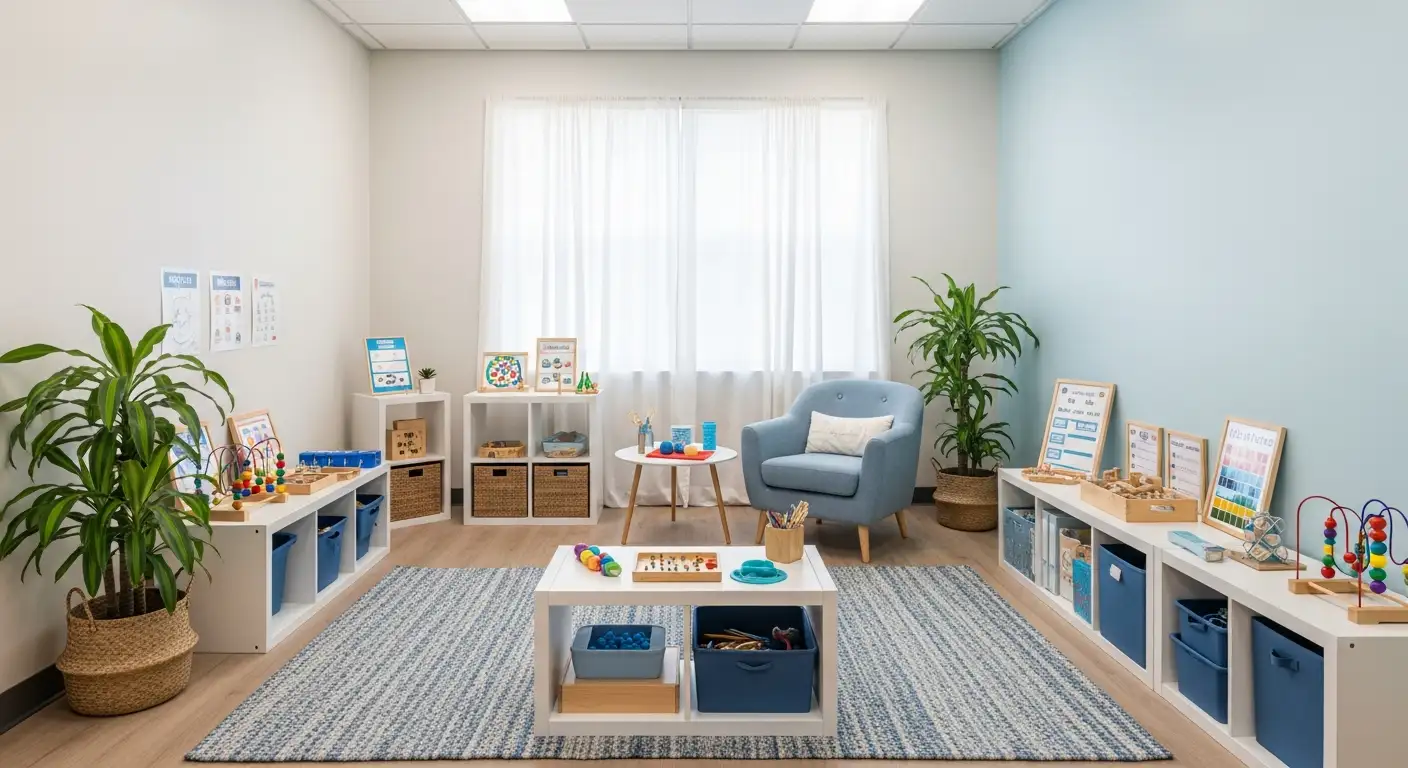Understanding How to Effectively Teach Children to Follow Instructions
Developing children’s ability to follow instructions is a cornerstone of their academic, social, and emotional success. This comprehensive guide explores proven strategies, developmental considerations, and engaging activities designed to improve children’s listening, comprehension, and execution of tasks. By tailoring approaches to individual needs and emphasizing patience and positive reinforcement, adults can foster skills that will serve children throughout their lives.
Effective Techniques for Giving Clear and Simple Instructions

What techniques can help children follow instructions more effectively?
Helping children follow instructions successfully is a fundamental part of their social and cognitive development. Several well-established strategies can make a significant difference.
First, use direct, statement-based commands rather than asking questions. Instead of saying, "Are you ready to get out your homework?" say, "Please sit down." This clarity reduces confusion and guides the child toward expected behavior.
Second, give instructions when near the child, not from across the room. Being close, at eye level, and making eye contact helps capture their attention and ensures they hear and understand the message.
Third, tailor instructions to the child's age. Use simple, clear language for younger children and respectful yet understandable language for older kids. Breaking down tasks into manageable steps also supports their ability to follow through.
It’s advisable to give instructions one at a time, especially for children with attention challenges. Overloading with multiple commands can be overwhelming and reduce compliance.
Fourth, keep explanations simple by avoiding unnecessary details. For example, instead of combining rationale with commands, say, "It’s raining. Go get your coat," rather than, "It’s raining, and I don’t want you to catch a cold, so get your coat."
Allow children time—about 5 to 10 seconds—to process the instruction without repeating it immediately. This pause helps them learn to listen and respond calmly.
In addition, reinforce understanding by asking children to repeat instructions or demonstrate them. Visual cues or routines, such as visual schedule cards, are also effective tools.
Furthermore, engaging activities like 'Follow The Leader,' 'Simon Says,' or 'Red Light Green Light' can make learning to follow directions fun and practical.
Using positive reinforcement, like praise or encouragement when a child follows instructions well, fosters motivation and repetition of desirable behavior.
Strategies such as gaining the child's full attention—by calling their name and making eye contact—are essential before giving directions. Removing environmental distractions and including visual or physical cues can also improve compliance.
Consistently practicing these techniques builds a child's ability to follow instructions and enhances their overall communication skills. Patience and understanding are crucial, especially when a child struggles; gentle repetition and positive feedback promote progress.
In summary, clear, direct commands, proper attention-getting methods, age-appropriate language, one-step instructions, and engaging reinforcement activities are pillars of effective instruction-giving for children.
By implementing these strategies, parents and educators can foster better listening skills, improve compliance, and support the child's ongoing development in learning and social interactions.
The Role of Developmental Milestones and Tailored Instructions

How can developmental considerations inform teaching instructions to children?
Understanding and considering a child's developmental milestones is crucial when teaching them to follow instructions. These milestones serve as benchmarks that indicate what skills children typically develop at various ages, including their ability to understand, listen, remember, and act on directions.
For instance, children aged 1 to 2 usually follow simple, one-step instructions, while those around 2 to 3 years old can often understand and execute two-part commands. By recognizing these age-related capabilities, adults can tailor their instructions to be age-appropriate, ensuring they are clear, simple, and manageable.
Adapting instructions based on developmental levels not only makes tasks more accessible but also boosts a child's confidence and willingness to engage. For younger children, this might mean using shorter sentences, visual cues, or demonstrations. For preschoolers and older children, instructions can be slightly more complex, incorporating multiple steps or additional explanations.
Furthermore, individual differences—such as cognitive, emotional, or language development, as well as cultural background—also influence how instructions are received and acted upon. Children with developmental delays or specific needs may require extra support, like visual schedules or breaking down tasks into smaller parts.
Incorporating play-based activities, modeling behaviors, and asking questions promotes exploration and curiosity, which are vital elements of development. These strategies help children practice following instructions in engaging ways that reinforce their current skills and gradually expand their abilities.
Effective teaching also involves adjusting communication styles: simplifying language for younger children, using positive reinforcement, and providing scaffolding where necessary. For example, offering choices within instructions or repeating instructions in a calm, clear manner can improve understanding and compliance.
Ultimately, understanding developmental milestones enables educators and parents to set realistic expectations, design suitable activities, and support ongoing growth in following instructions. This approach fosters not just immediate compliance but also long-term skills in attention, memory, sequencing, and problem-solving—fundamental components of learning and everyday functioning.
Practical Activities and Play-Based Approaches
 Engaging children in structured and fun activities can significantly improve their ability to follow instructions. Play-based approaches turn learning into enjoyable experiences, encouraging active participation and skill development.
Engaging children in structured and fun activities can significantly improve their ability to follow instructions. Play-based approaches turn learning into enjoyable experiences, encouraging active participation and skill development.
One effective way to foster listening and sequencing skills is through interactive games. Games such as 'Simon Says,' 'Follow The Leader,' 'Red Light Green Light,' and 'Grid Game' are excellent for this purpose. These activities require children to listen carefully, remember steps, and act in accordance with the instructions, all while having fun. Such games not only help develop receptive language skills but also improve attention, memory, and the ability to follow multi-step instructions.
Using visual aids is another proven technique. Routine cards, pictures, or visual schedules provide clear cues and help children understand what is expected of them. These tools are especially useful for young children or those with communication needs, as they make abstract instructions more concrete. For example, a sequence of pictures showing brushing teeth or getting ready for bed can guide children through routine tasks step-by-step.
Designing activities that involve following multiple steps can further bolster comprehension and memory. For example, games like 'Listen and Color' or 'Listen and Draw' ask children to listen carefully to a set of instructions and then execute them, reinforcing the importance of sequencing. Origami or craft projects that require following a series of directions can also help children practice attention to detail and logical thinking.
Breaking instructions into smaller, manageable parts is crucial. For instance, instead of asking a child to clean their room all at once, break the task into smaller steps—pick up toys, make the bed, arrange clothes—and give one instruction at a time. This approach prevents overwhelm and allows children to focus and succeed.
Consistency and reinforcement are vital. Repeating activities, providing praise for following directions, and encouraging children to ask questions contribute to better learning outcomes. Reducing environmental distractions during these activities ensures children remain attentive and engaged.
Incorporating these strategies into everyday routines and playtime activities can help children develop stronger following instructions skills, which are foundational for academic success, social interaction, and safety.
| Activity Type | Description | Benefits |
|---|---|---|
| Games like 'Simon Says' | Children listen and follow commands, with some commands involving multiple steps | Develops listening, sequencing, and attention |
| Visual aids | Use routine cards or pictures to guide tasks | Reinforces understanding and independence |
| Multi-step instructions exercises | 'Listen and Color,' 'Listen and Draw,' origami | Enhances comprehension, memory, and sequencing |
| Practice with clear steps | Breaking down tasks into simple parts | Builds confidence and reduces overwhelm |
| Positive reinforcement | Praise effort and success | Motivates continued practice |
By combining these playful and visual methods, adults can make learning to follow instructions an engaging and effective experience.
Strategies for Coaching Listening and Comprehension Skills
What are best practices for coaching children on listening and comprehension skills?
Helping children develop strong listening and understanding abilities requires practical and consistent strategies. The first step is modeling behaviors that promote active engagement. This includes maintaining eye contact, speaking clearly, and offering verbal feedback that confirms the child is paying attention. These actions help children recognize effective listening habits and encourage them to mirror these behaviors.
Creating an environment free from distractions is crucial. Turning off noisy appliances, reducing visual clutter, and choosing quiet spaces help children focus on the task at hand. When teaching comprehension, educators and caregivers should use visual aids like graphic organizers, pictures, or routine cards to support understanding and memory.
Explicitly teaching children how to enhance their listening can significantly boost their skills. Strategies such as predicting what will happen next, asking questions, summarizing content, and making inferences encourage active participation. These methods help children become purposeful listeners, who not only hear but also interpret and analyze information.
Engaging activities like listening games, story reading, and structured discussions maintain motivation and build stamina over time. Consistent positive reinforcement, such as praising attentive behavior, motivates children to continue practicing.
In addition, collaboration with educators and speech therapists can identify and address any underlying auditory processing or attention issues, providing tailored support that promotes growth. Through these combined practices, children develop more effective listening and comprehension skills, which are foundational for success across academic and social settings.
Addressing Challenges and Providing Emotional Support
Why is patience and emotional support important when teaching children to follow instructions?
Patience and emotional support play a vital role in helping children develop the skill of following instructions. Creating an environment where children feel safe and understood encourages engagement and reduces anxiety, which can otherwise interfere with their ability to listen and respond.
When adults, such as teachers and parents, show patience, they give children time to process and understand directions without feeling rushed or pressured. This calm approach helps children, especially those with attention challenges or language delays, to stay focused and motivated.
Moreover, providing emotional support through positive interactions, validation, and encouragement helps children build confidence. When children sense that their efforts are appreciated, they are more likely to try again, even if they struggle initially.
A supportive atmosphere fosters a sense of trust, making children more receptive to learning new skills. It also reduces behavioral issues that often arise from frustration or feeling overwhelmed.
In practical terms, patience involves waiting a few seconds after giving directions to allow the child to process and act. Emotional support can include praising compliance, offering gentle reminders, and showing understanding when children have difficulty following instructions.
Overall, patience and emotional support strengthen a child's emotional well-being, which is essential for learning and successful social interactions.
Recognize common barriers such as attention deficits, language delays, and distractibility.
Children may face several obstacles in following instructions, including attention deficits, language delays, and distractibility. Attention deficits, common in children with ADHD or other developmental concerns, make it hard for them to stay focused on tasks or directions.
Language delays hinder understanding or processing instructions, especially if directions are complex or not tailored to their communication level. For instance, younger children or those with receptive language challenges may need instructions broken down into very simple, clear steps.
Distractibility, often linked with environmental factors like noise or other stimuli, diverts a child's attention away from the task at hand. This can lead to missed or ignored instructions.
Recognizing these barriers allows caregivers and educators to adapt strategies effectively. For example, using visual cues, giving one instruction at a time, and reducing environmental distractions can enhance a child's ability to follow directions.
Use patience, positive reinforcement, and emotional support to encourage compliance.
Encouraging children to follow instructions is most effective when adults approach the process with patience and positive reinforcement. Celebrating small successes motivates children and builds self-esteem.
Positive feedback, such as praise or rewards, helps children associate following directions with positive outcomes. For children seeking approval, enthusiastic and sincere encouragement makes a significant difference.
Patience is critical, especially when a child struggles to follow a multi-step instruction or becomes distracted. Waiting a few seconds after giving a direction allows the child time to think and respond.
Offering emotional support involves listening to the child's feelings, validating their frustrations, and calmly guiding them back on track.
This encouraging approach teaches children that mistakes are part of learning and that persistence pays off, fostering a growth mindset.
Understand environmental and emotional factors that might hinder following instructions.
Various environmental and emotional factors can impede a child’s ability to follow directions. Noise, clutter, or other distractions can overwhelm some children, especially those sensitive to sensory stimuli.
Emotional states like fatigue, illness, fear, or stress can also reduce a child's focus and willingness to comply.
For example, a tired or unwell child might find it difficult to process or remember directions, leading to frustration and non-compliance.
Creating a calm, predictable environment helps children feel secure and focused. Establishing routines and giving advanced notice about upcoming instructions can ease anxiety and improve cooperation.
Understanding these factors allows adults to adjust their approach—such as providing breaks, reducing distractions, or using calming techniques—thus supporting the child's overall readiness to follow instructions.
| Strategy | Description | Additional Tips |
|---|---|---|
| Gaining Attention | Get child's eye contact before giving instructions | Use the child's name, be at eye level, avoid shouting |
| Clear, Short Instructions | Use simple language and focus on one task at a time | Repeat and show actions if needed |
| Positive Reinforcement | Encourage compliance with praise or rewards | Catch children doing the right thing |
| Redirection & Environmental Control | Minimize distractions and redirect attention if needed | Turn off noise, move to quieter space |
| Patience & Consistent Practice | Allow time for processing and repetition | Give instructions with waiting pauses |
| Emotional Support | Validate feelings and show understanding | Use calm tone, offer encouragement |
Incorporating these strategies consistently helps children overcome barriers, builds confidence, and encourages cooperation. Tailoring approaches to individual needs and developmental stages ensures effective learning and support.
Empowering Through Patience and Practice
Teaching children to follow instructions is a multifaceted process that benefits significantly from clear communication, developmental awareness, engaging activities, and emotional support. By employing tailored strategies—such as giving specific commands, making eye contact, using visual cues, and practicing through play—adults can nurture children’s listening and compliance skills. Patience, positive reinforcement, and understanding individual needs are the building blocks for nurturing confident, independent, and attentive learners. When combined, these approaches not only improve instruction-following but also promote overall development, fostering a foundation for success in all areas of life.
References
- How to Give Kids Effective Instructions - Child Mind Institute
- Following Directions: How It Helps Kids Develop Critical Thinking
- Following Instructions - Kid Sense Child Development
- Requests and instructions: helping children cooperate
- How to get toddlers to follow directions - Children's Mercy
- Steps for Giving Good Directions | Essentials for Parenting Toddlers
- Following Directions: A Guide for Parents - Marcy Willard PhD
- 6 activities for teaching a 3-year-old to follow instructions - Kindship
- Helping children follow directions - MyHealth Alberta
- Following Directions - Tools for Your Child's Success









